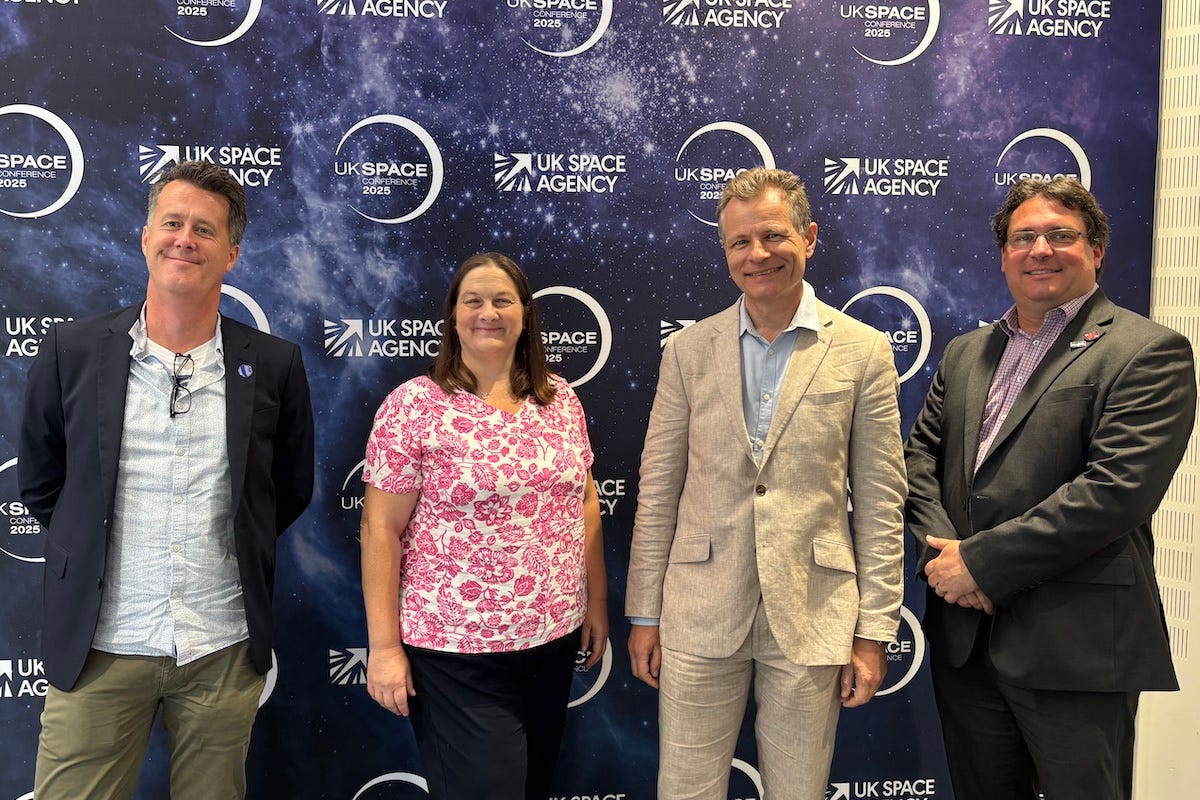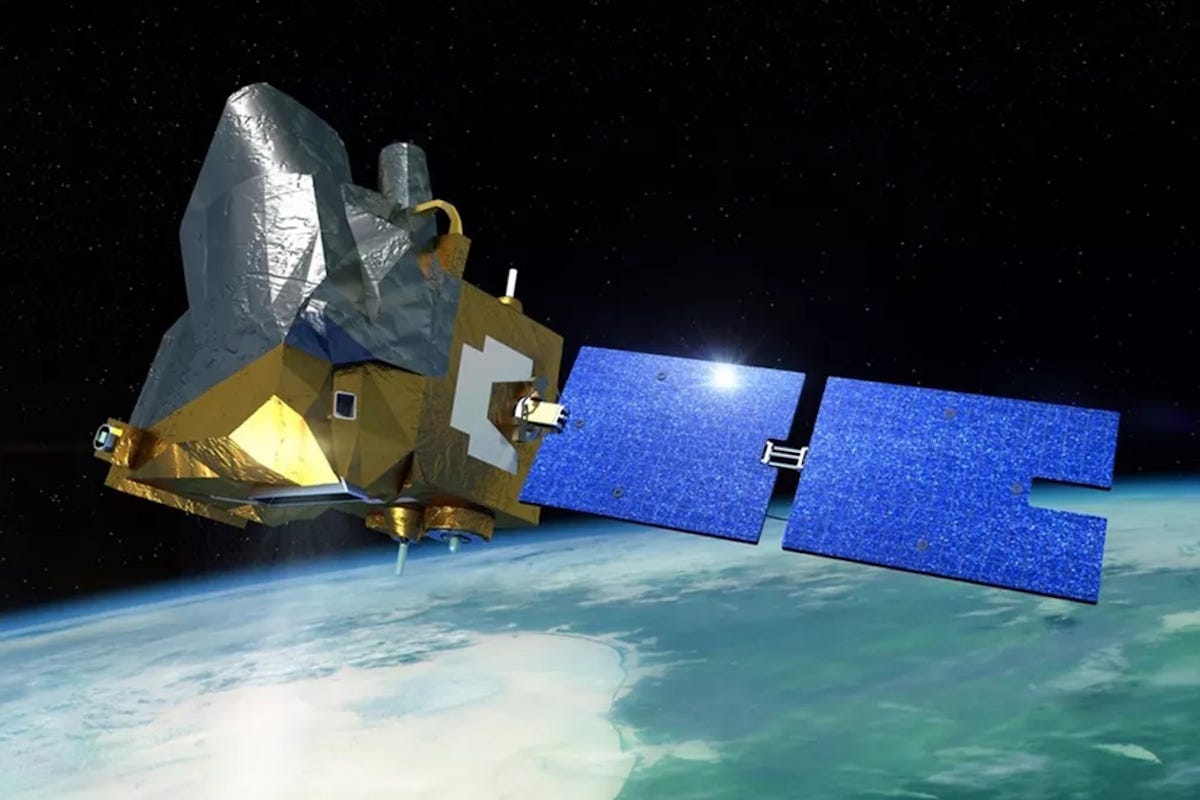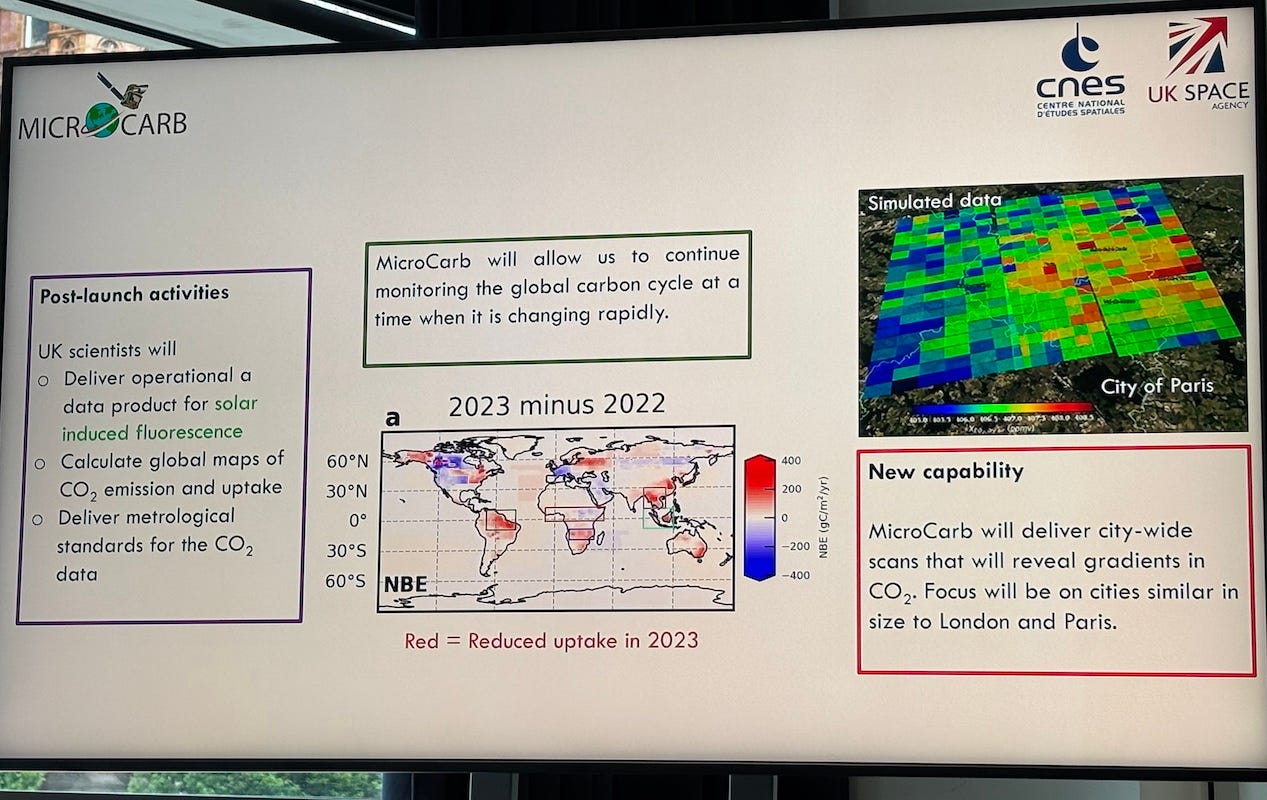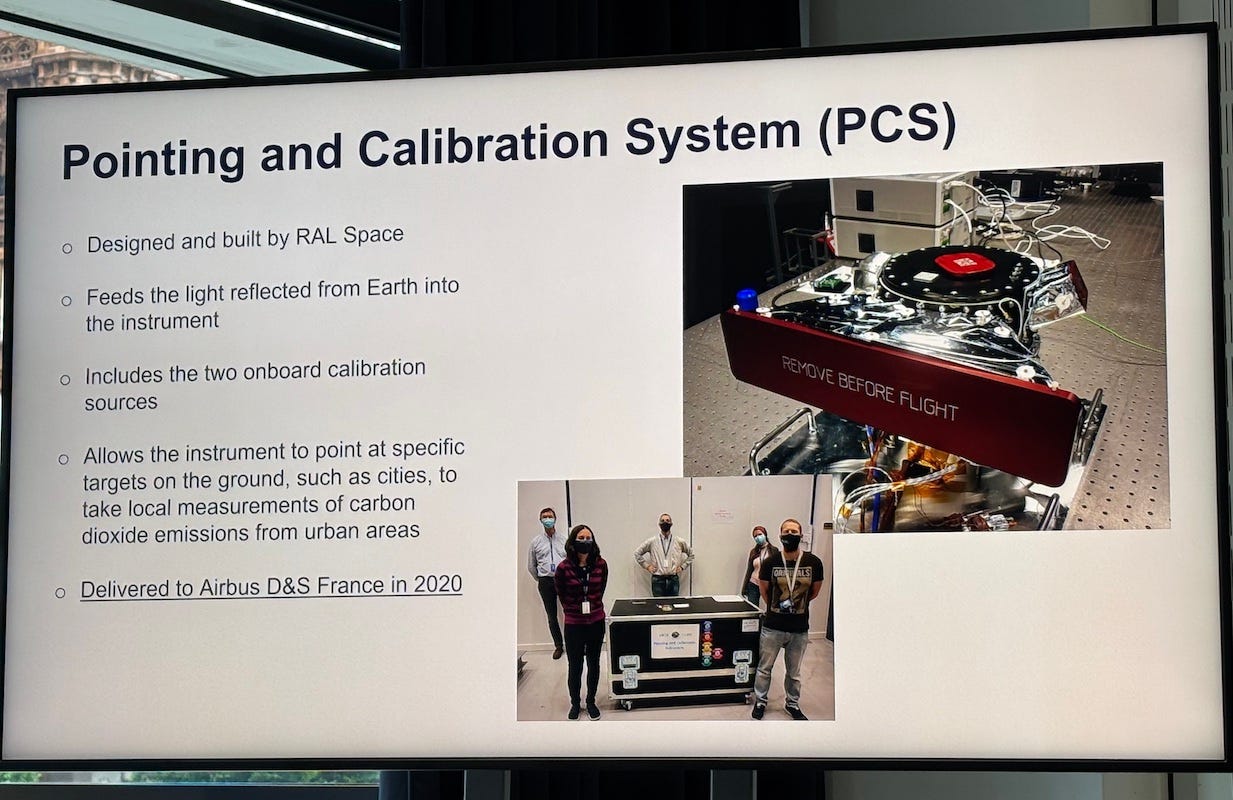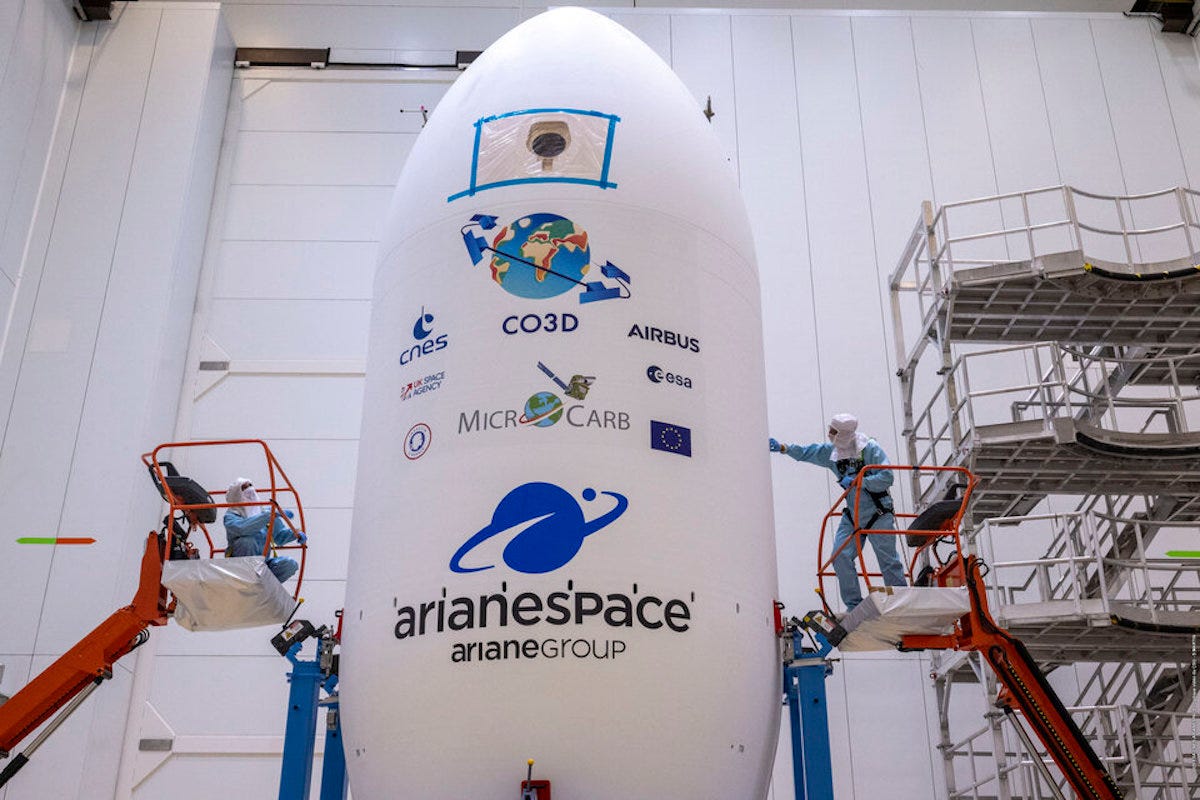MicroCarb Satellite Launches to Map Urban CO₂ and Support Climate Goals
Europe’s first carbon-monitoring satellite delivers high-resolution urban data to strengthen climate science and net zero strategies
Scientists need better tools to monitor carbon dioxide (CO₂), the primary driver of global warming. While ground stations offer key data, significant gaps remain—especially in the tropics and over oceans. Satellites can fill those gaps.
Now, for the first time, Europe has launched its dedicated CO₂-monitoring satellite.
MicroCarb, a UK-France joint mission, was successfully launched into low Earth orbit on July 26, 2025, aboard a Vega-C rocket from Kourou, French Guiana. Equipped with city-scanning technology, the 180kg satellite is designed to deliver detailed CO₂ maps from space, supporting global net-zero goals and policy verification under the Paris Agreement.
“This groundbreaking mission is proof of what can be achieved when we harness the strength of Britain’s burgeoning space industry, together with our deep scientific expertise,” said Sir Chris Bryant, UK Minister for Space. “Bolstered with UK Government backing, the MicroCarb satellite will overhaul our ability to track carbon emissions – supporting the clean energy mission that’s key to this Government’s Plan for Change.”
The UK Space Agency (UKSA), working closely with academic, industrial, and international partners, played a key role in bringing the mission to life.
“Satellites like MicroCarb are our eyes in the sky,” said Dr. Paul Bate, Chief Executive of the UKSA. “Over half of the critical data we use to understand climate change comes from space, and MicroCarb’s successful launch is a major leap forward in our ability to track carbon emissions and absorption with unprecedented accuracy.”
UK scientists led the development of core components, including calibration hardware and data algorithms.
Paul Palmer, UK science lead for the mission, explained: “Currently, we are witnessing rapid and unprecedented changes in the global carbon cycle. MicroCarb will deliver SIF (solar-induced fluorescence) and atmospheric CO₂ data that are crucial for understanding those changes.”
Understanding the Mission
At a press conference during the UK Space Conference 2025 in Manchester on July 17, Palmer presented MicroCarb as a timely scientific asset. A professor at the National Centre for Earth Observation (NCEO) at the University of Edinburgh, he emphasized the satellite’s ability to distinguish between natural and human-made emissions.
“We’re seeing shifts in the carbon cycle, particularly in tropical regions like the Amazon, where carbon absorption appears to be weakening,” Palmer said. “MicroCarb allows us to monitor these changes with far greater spatial detail and accuracy than ever before.”
Palmer highlighted the importance of SIF—the faint glow plants emit during photosynthesis—which MicroCarb can measure to assess ecosystem health. This capability, developed by researchers at the University of Leicester, supports efforts to distinguish between anthropogenic emissions and natural CO₂ fluxes.
Crucially, the satellite also features a city-scanning mode that can track urban emissions at 2km x 2km resolution.
“This means we can now observe CO₂ concentration gradients across cities like London and Paris,” Palmer added. “That opens up new opportunities for designing sustainable urban policies.”
Beth Greenaway, Head of Earth Observation at UKSA, stated that the need for MicroCarb arose following the Paris COP summit, where demand increased for detailed carbon data.
“We need this mission for society,” she said. “It's important for policy and regulation, for Net Zero modeling and sustainable finance markets.”
She emphasized that MicroCarb sets the stage for larger missions, such as the EU’s Copernicus CO2M (Copernicus Anthropogenic Carbon Dioxide Monitoring).
“This is a precursor. The operational systems developed now will seamlessly transfer to CO2M,” she noted. “We've deepened our relationship with CNES (Centre national d'études spatiales) and built up UK expertise—both technically and diplomatically.”
UK-France Collaboration
Remi Challamel, Senior Business Development Manager at Thales Alenia Space UK, outlined how his team led the assembly, integration, and testing of MicroCarb at Harwell.
“Despite challenges from Brexit and COVID, we completed environmental tests and safely shipped the satellite to French Guiana,” he said. “This is the first European mission to monitor global CO₂ flows at this level. We are proud to be a part of it.”
Challamel detailed a three-phase AIT campaign: first assembling the platform; then mating the instrument; and finally conducting thermal vacuum and vibration tests. “We even retrofitted the propulsion system to enable end-of-life passivation, reducing orbital debris risk,” he said.
He added that MicroCarb complements upcoming missions, such as CO2M and CHIME (Copernicus Hyperspectral Imaging Mission for the Environment).
“These missions form a constellation. MicroCarb assesses global CO₂ fluxes, CO2M will measure regional human-made CO₂, and CHIME will focus on methane,” he said. “Together, they provide a complete picture.”
Paul Eccleston, Chief Engineer at RAL Space, said: “We provided test facilities for thermal vacuum and vibration testing. Our team also developed the onboard Pointing and Calibration System (PCS), enabling the satellite to steer its field of view and maintain metrological integrity.”
He explained that the calibration system includes both internal light sources and a solar diffuser.
“It’s designed to track any instrument drift and keep measurements within one part per million,” he noted. “That level of precision is essential for climate verification and carbon market confidence.”
Tracking Emissions Data
The data from MicroCarb is expected to become foundational to carbon accounting and emissions trading schemes. Experts believe the satellite will support efforts to validate national greenhouse gas inventories, build trust in carbon offset markets, and help businesses better manage their climate disclosures.
The UKSA is collaborating with EUMETSAT (the European Organisation for the Exploitation of Meteorological Satellites) and other partners to ensure that MicroCarb’s data feeds directly into operational systems.
“Reliable satellite data will allow regulators and investors to make better-informed decisions,” said a senior official involved in the data integration. “This is about creating transparency in emissions reporting.”
In addition to governmental use, MicroCarb’s insights are likely to support the growing market for voluntary carbon credits. Cities, too, will be able to use the data to assess the effectiveness of local emissions-reduction measures, helping shape greener transport and energy policies.
Toward Future Missions
Though MicroCarb is a standalone mission, it is also a precursor to the EU’s Copernicus CO2M constellation, which will expand Europe’s capacity to monitor anthropogenic carbon emissions from space. The UK will play a supporting role in that effort through infrastructure, expertise, and early datasets derived from MicroCarb.
Greenaway noted that MicroCarb marks a step change in how Britain participates in international missions.
“We’re not just providing equipment—we are full mission partners,” she said. “This approach has elevated our capabilities in space-based climate observation and paved the way for future collaborations.”
She added that the mission supports education and workforce development.
“We have youth engagement programs built around MicroCarb. It’s helping us inspire the next generation of climate scientists,” she said. “The mission has become a symbol of collaboration, capability, and climate ambition.”
As the mission enters its operational phase, scientists across the UK are preparing to analyze the incoming data using a national CO₂ monitoring network. The goal is to translate raw satellite readings into actionable insights for policymakers, businesses, and climate negotiators.
Palmer summarized the significance of the moment: “We’ve spent more than a decade preparing for this. Now, we’re ready to turn MicroCarb’s data into real-world climate intelligence.”
The satellite’s findings are expected to drive new international standards for carbon monitoring and shape the policies of future climate agreements.



